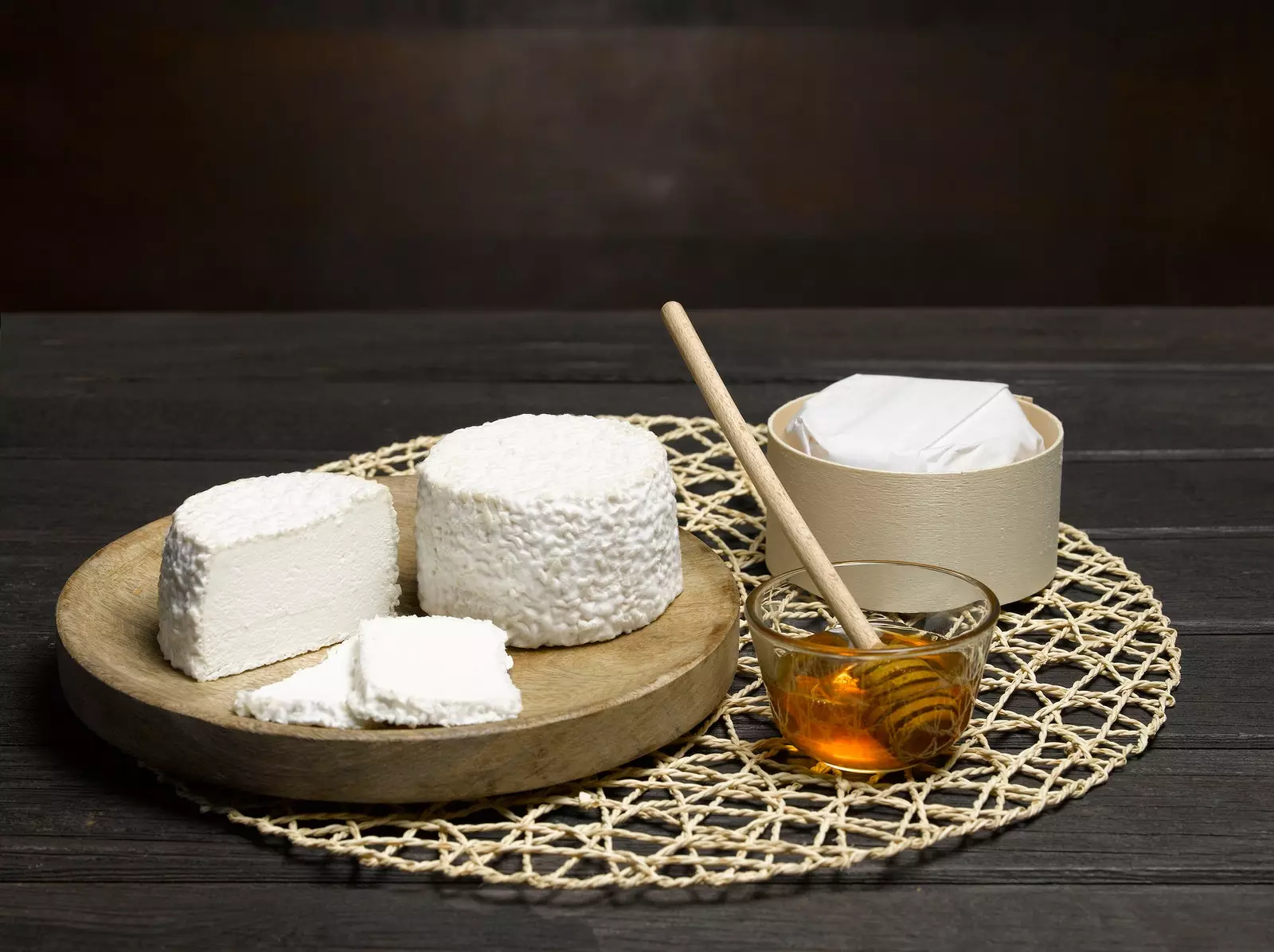
Our (necessary) tribute to the artisan cheese factories of the Valencian Community
Until 10 years ago, everything that was made in the Valencian Community it was fresh cheese . But that has changed. Now the artisan cured cheeses from native breeds , those that smell and taste of landscape, ask for passage... and a hole in that map in which they almost never appear.
The Artisan Cheese Fair of Montanejos, for several years, defends them from its trench. turns out this town of Castellón not only does it have tremendously photogenic hot springs, but it also annually organizes the largest artisan cheese contest in the region. David Vizcaíno, Director of the Montanejos Tourism Foundation, guides us in this cheese route through the Spanish Levante to discover those cheeses that continue to be made with time, patience and emotion. Yes, there is still that.
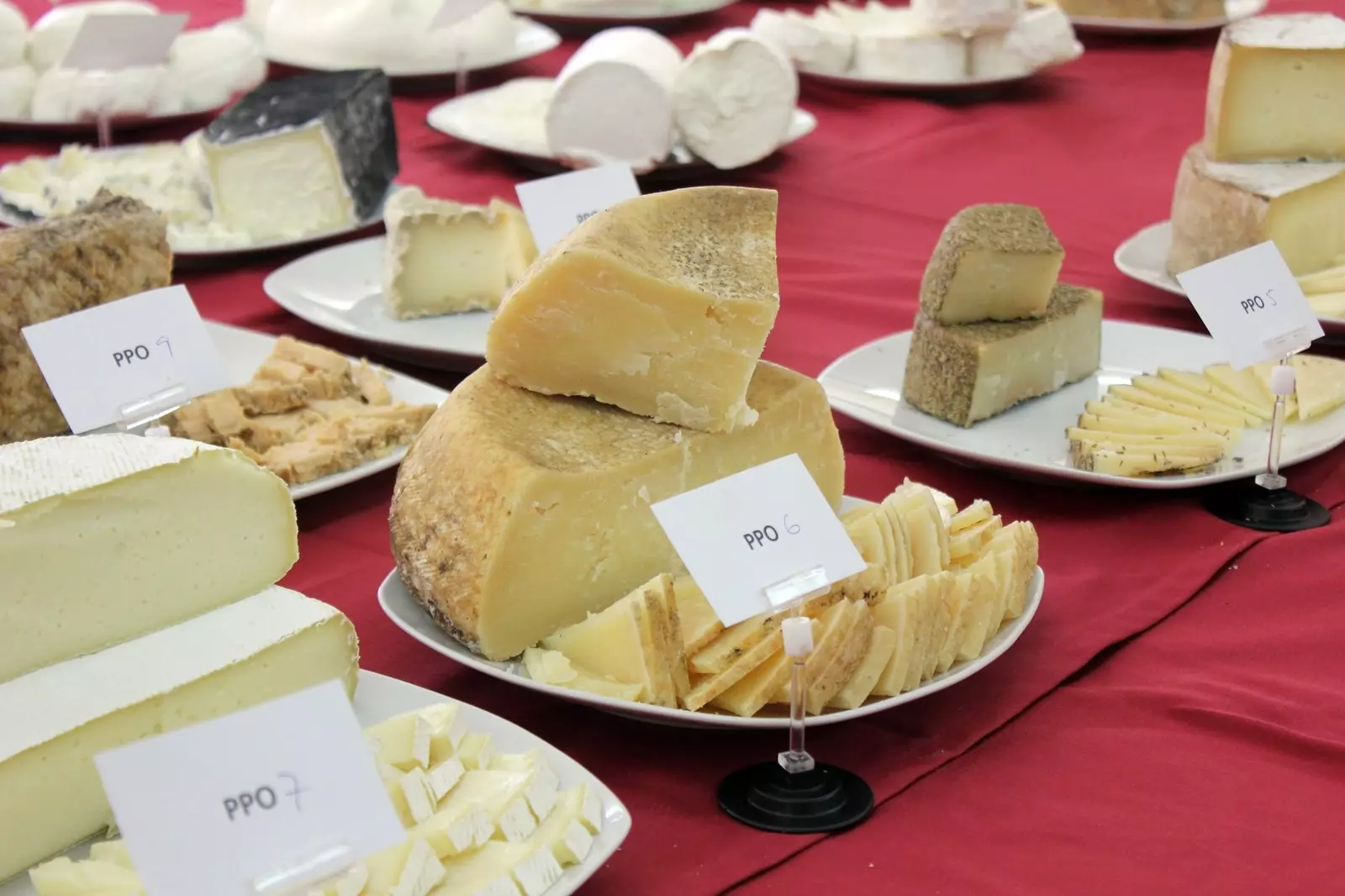
Montanejos artisan cheese fair
SAN ANTONIO CHEESE (Callosa d´en Sarrià, Alicante)
“In the 60s, to my grandmother, Maria Devesa Llorens , that she had a stall in the market, she came up with buy two kilos of milk to make fresh callosí cheese at home , mixture of cow and goat, and sell it. She then she started to do Alicante or blanquet type cheese , also fresh but with a little pressing. My parents were involved in that idea and… until today, my husband and I run the cheese factory”. Toñi Ronda, third generation, grew up surrounded by cheese, in the medlar village with Denomination of Origin and only 15 kilometers from Benidorm or Altea.
"Us we continue making fresh cheeses (the callosí without salt, the napkin with salt and the blanquet ), which are our hallmark, but we wanted to make a cured goat cheese and that is why years ago we launched ourselves to do tests. We bought a refrigerator cabinet, which we used to mature the cheeses, we took a course at the Polytechnic University of Valencia and spent a lot of time in the vat to improve it”. So much so that since 2001 they received the award for the best Spanish cheese from the Ministry of Agriculture, Fisheries and Food They haven't stopped harvesting World Cheese Awards . The last one (2019-2020), at his cured goat cheese with rosemary from the Sierra de Mariola . Another of the most awarded (and sold) is his aged goat cheese, aged for 7 to 12 months.
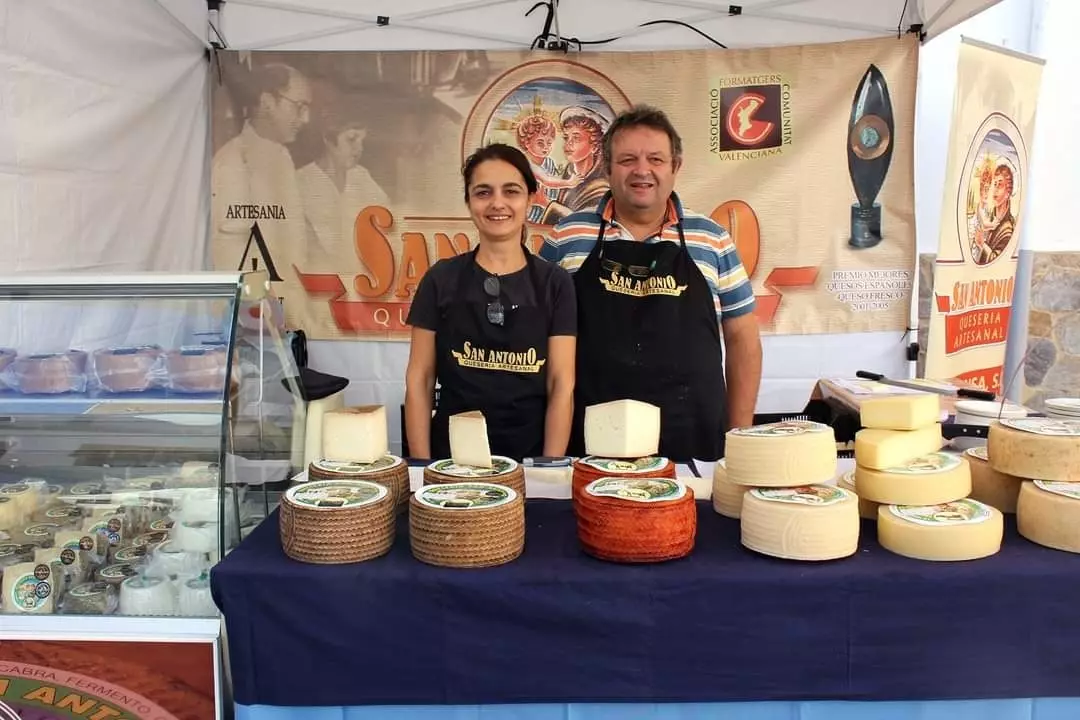
The team of the Quesería San Antonio
In total they have 11 references, all made with hand-pasteurized low-temperature milk : also a semi-cured goat cheese either cheeses aged for more than two years , for gourmets. In her elaborations, the connection with her rancher is perceived, which Toñi confirms. Without that, it wouldn't be possible. They use goat milk from the Murcian Granada breed of Agost (Alicante) and from the Sierra La Carrasqueta , where goats graze and eat acorns or almonds. And that shows in the taste of the cheese.
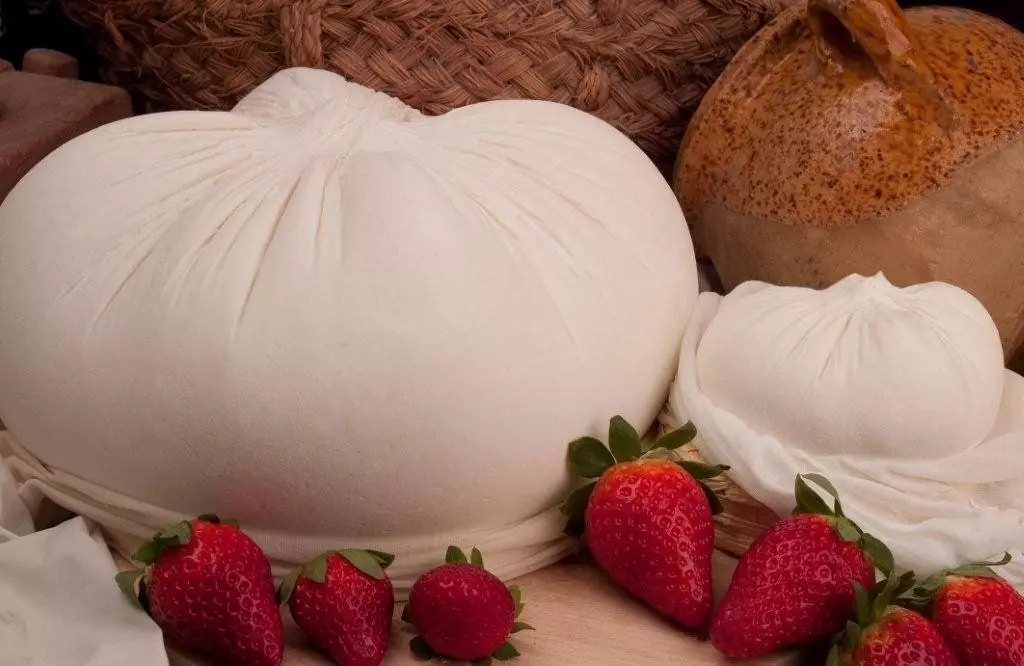
Napkina fresh cheese from Quesería San Antonio, made with pasteurized cow's and goat's milk
The same thing happens with their cow cheeses: the milk comes from Gandia , whence the Livestock La Teulaina He brings them milk every morning. They also make with cow's milk from Murcia, from friesian breed . Put on your list aged cow cheese.
And what about their fresh cheeses : when you taste them (get ready for a mouthful that tastes like freshly milked milk) you understand why that's where it all started. Our advice: if you go to the cheese factory in the afternoon, you will take the fresh cheese made that same day . It is a delicacy that we recommend accompanying a slice of pink tomato from Altea and an anchovy , as an appetizer anywhere. Why can't you imagine a picnic without cheese? “ And with honey, medlar jam or medlar in syrup (which you can also buy at their cheese shop), it is better than a cake”. For something Toñi always says that they only make addictive cheeses.
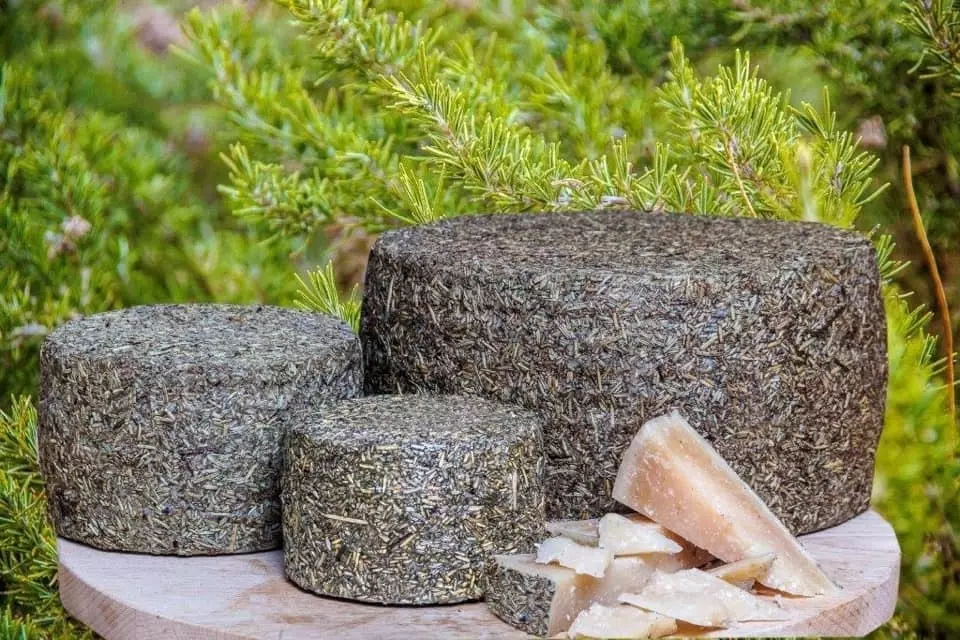
Bronze medal for best goat's milk cheese (goat cheese with rosemary from Qusería San Antonio)
HOLE OF THE CHURCH (Los Pedrones, Requena, Valencia)
Three Valencian brothers ( Luis, Manuel and Nacho Roldan ) now run this family business that produces dairy products from their own goat farming: milk, yoghurt and cheese in the region of Utiel-Requena, an eminently wine-producing area.
His father, an industrial technical engineer, created it in 1998 : “he got fed up with the city and decided to leave the multinational where he worked to come to the countryside, to this area where we spent the summer”. At first, he wanted to live off his almond trees or fulfill his dream of creating a school farm . But, by chance, she started with a small livestock farm of 200 goats of the Murcian Granada breed . His sons (two of them draughtsmen and the other oenologist) supported him. “With a lot of effort, work and with a loan, we changed Valencia for Los Pedrones and decided to undertake ”. now they have 1,300 goats, which produce 60,000 liters of milk per month . tell us Nacho, the cheese master of Hoya de la Iglesia , which tells us his story as someone who remembers each photo in a family album.
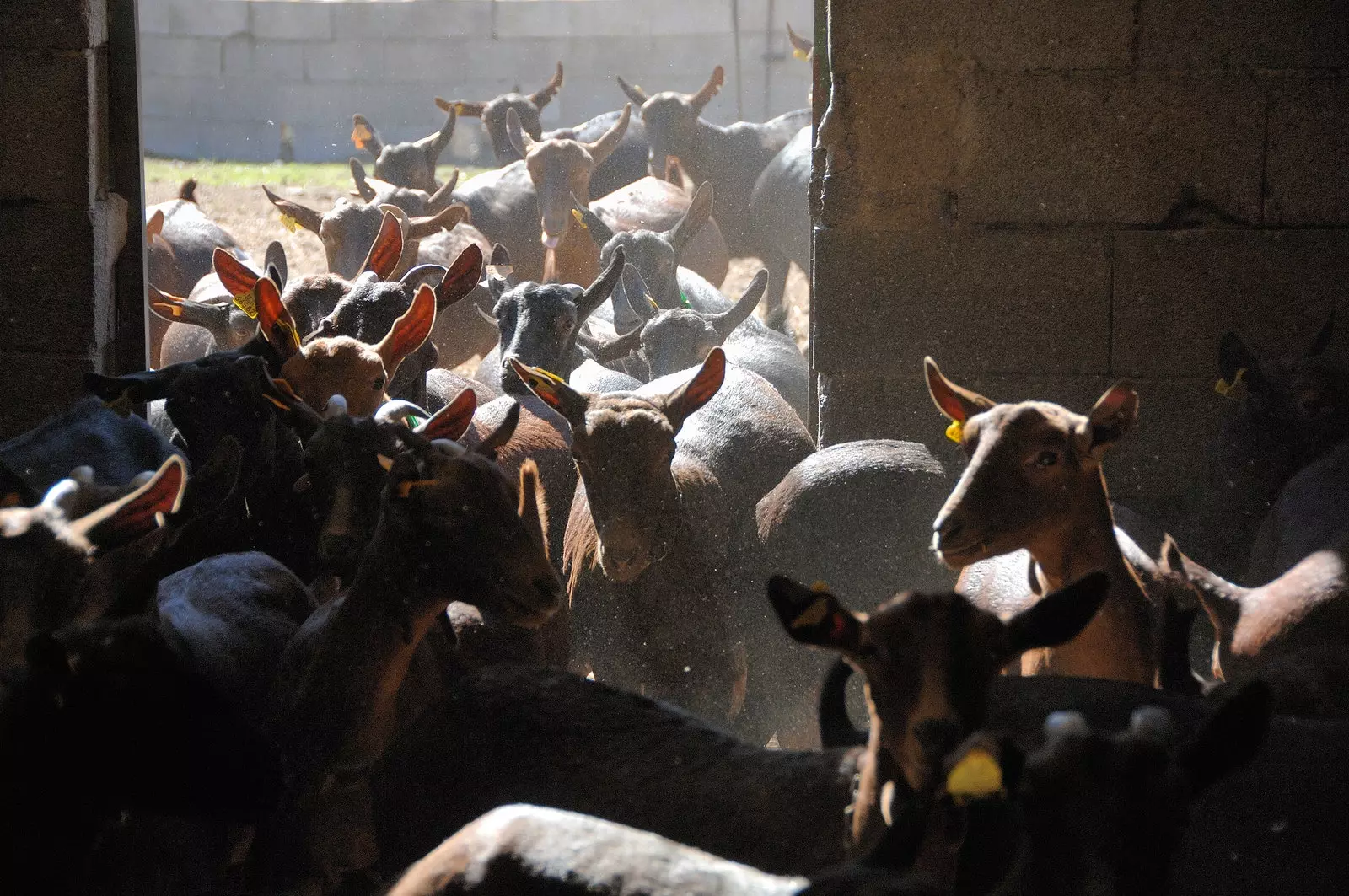
The goats of the Hoya de la Iglesia cheese factory
In that notebook of memories you can already put that they sell to Italy, Holland or France , but also that these years have achieved several World Cheese Awards, such as a bronze medal in 2009 Y one gold in 2016 for your soft goat cheese Cuatro Picos , the jewel in the crown, with a hazelnut flavor. Made with pasteurized milk (they subject it to a temperature of 65º for half an hour and then lower it to 35º to add the rennet and the ferments) and enzymatic coagulation , produced by the action of rennet, is wrapped in cotton gauze in a napkin format and aired for 3 weeks, producing a natural rind with a characteristic grayish mould. "We decided to work on the natural bark, instead of painting it, as was usually done in this area."
Also have raw goat milk cheeses , such as Montote, in the form of a truncated pyramid, lactic fermentation, slightly moldy and spicy natural rind, unctuous and white paste. Or raw cow's milk, like El Pedrón (World Cheese Award silver medal in 2016) , enzyme fermentation, cooked pasta and washed rind.
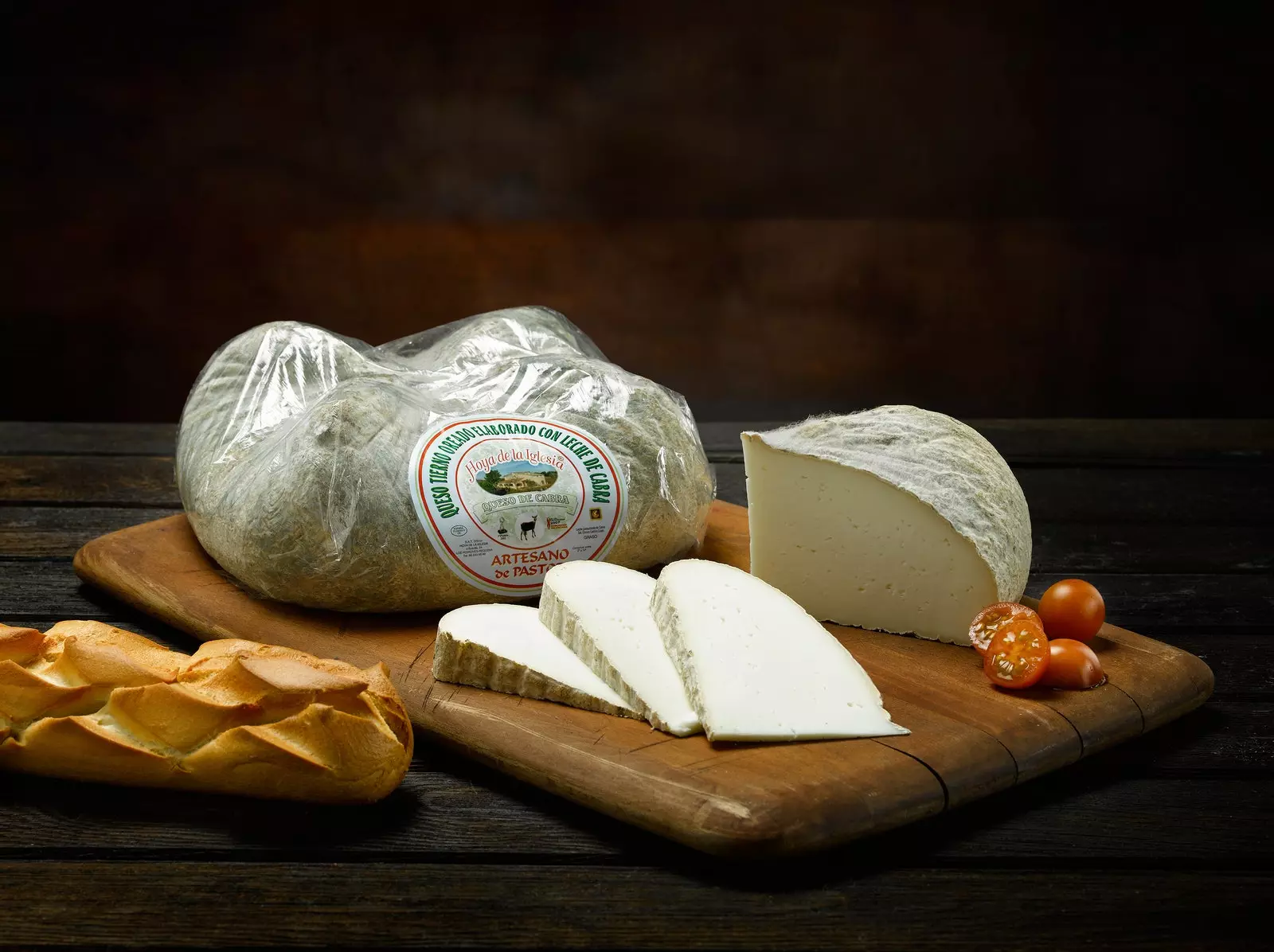
Four Peaks Cheese from Hoya de la Iglesia
Another of his temptations is cheesecake . It has always seemed strange to us that dairies do not make the quintessential cheese delicacy and we have finally found one. It only takes your fresh cheese, eggs, cornmeal and sugar.
Nacho speaks to us with an excessive passion for his brothers (“I cannot conceive of the company without them”), for his family and for his cheeses. “ My favorite is the Medallion (a lactic fermentation goat cheese). Between my son and I, we had one for dessert, after dinner, with tomato jam or rosemary honey . And the Four Peaks I like to grill it and then put a mixture of sweet paprika, garlic, oregano and extra virgin olive oil on top”.
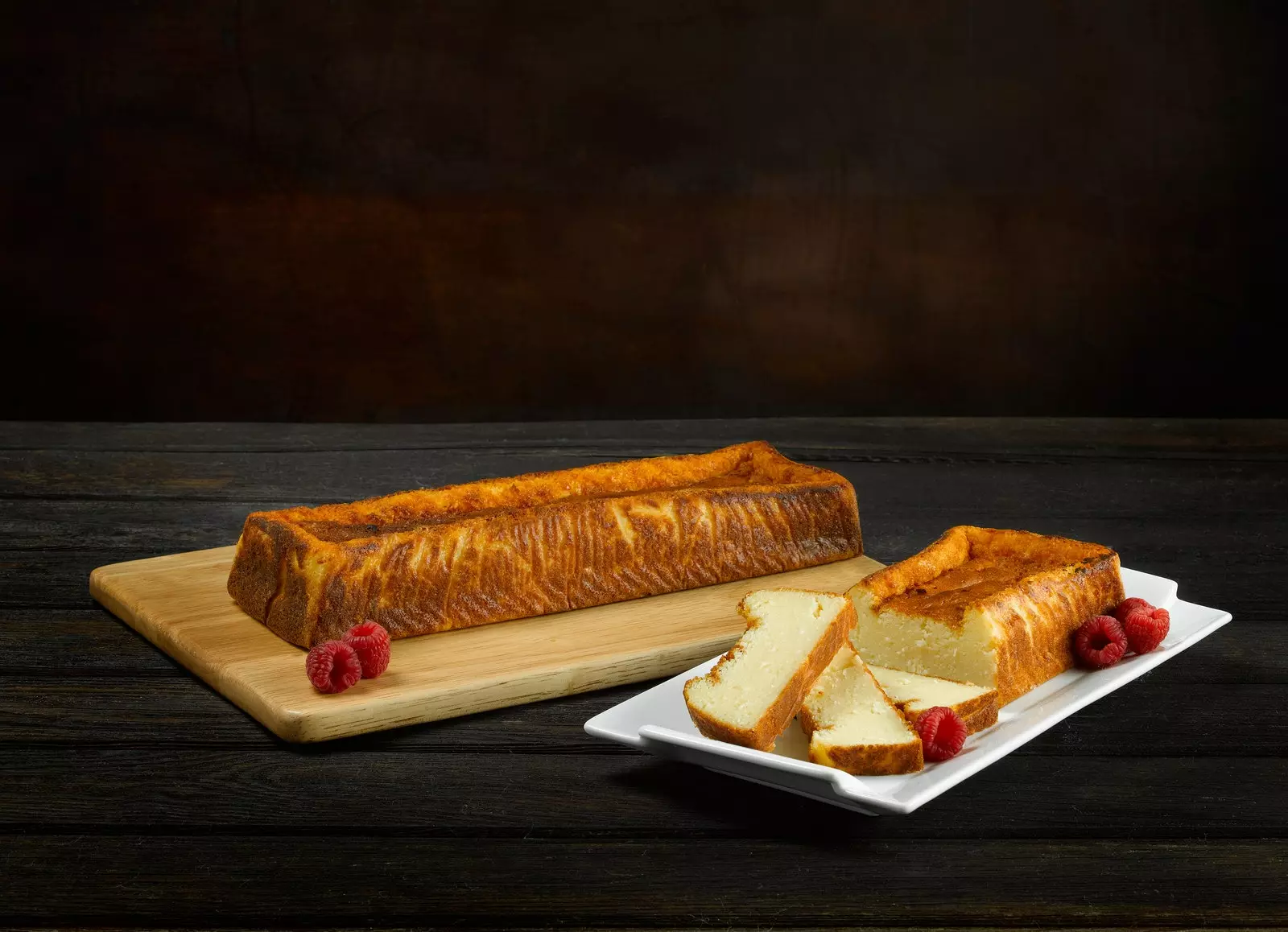
Hoya de la Iglesia cheesecake
But this is only the beginning, because they do not settle: they will soon have their own cattle farm and have already started the construction project of underground tunnels where the cheeses will mature . And what they have left. Nacho tiptoes through topics that also interest us, such as his commitment to sustainability : “around 90% of the light we use in livestock farming comes from renewable energy We are practically self-sufficient. We make hot water with olive stones and the next step in the cheese factory is to install solar panels”. We ask why they don't tell. "If you can, why not do it?" They just want to sell cheese… and authenticity.
LOS CORRALES ARTISAN CHEESE (Almedijar, Castellón)
in the heart of the Sierra del Espadán , this artisan cheese factory created 30 years ago by a neo-rural couple (both from Madrid) was one of the first in the Valencian Community.
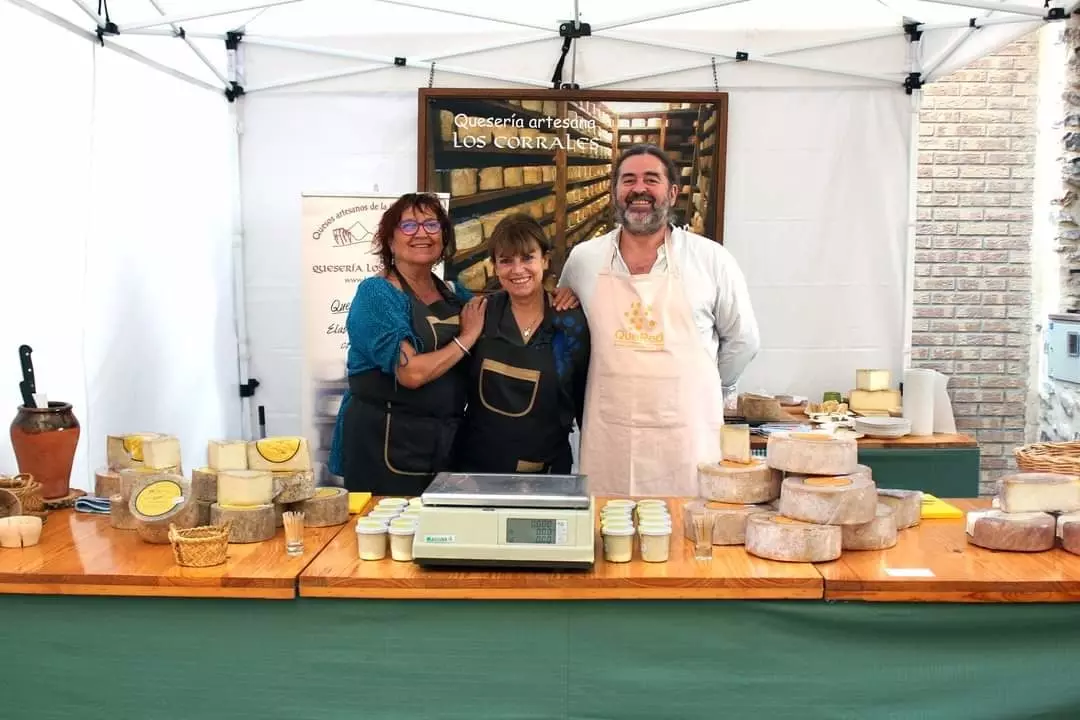
Los Corrales artisan cheese factory
"We weren't from here. We didn't even come from a family of cheese makers , but we wanted to live in the countryside. Since we did not have land and were not farmers, we decided to set up a cheese factory , because I had learned to make cheese at a farm school in Madrid, thanks to a woman from Extremadura who had a goat, and I liked the job”. This is how they began** Mayte Regidor and Ángel Valeriano**, today president of the Association of Cheese Makers of the Valencian Community : making fresh cow's milk cheese , “because it was the only one in the entire region. There were only goats in Alicante, and sheep, until 10 years ago, there were none in the Community”. They were different times. You could go slower, she tells us.
At that time they sold in health food and natural products stores or to vegetarian restaurants. “Our evolution has been very linear. We have always sold at home to neighbors or in the markets of nearby towns ( Segorbe, Jerica, Viver ). We sold fresh cheese during the first years, but then we also cured cheese , which is what we focus on now. Because Valencian fresh cheeses are impressive , but growing up is an exciting job that got us hooked.”
Now they make raw goat and sheep milk cheeses from local herds , which they buy from farmers in the area. And they remain faithful to their essence: “We have never separated from our original objective: to work with the best local raw material, sell an honest product of the highest quality, maintain a reasonable price range and work with a very limited production . We continue to produce the same amount as in the 90s: 500 liters of milk daily . Doing more would mean not being able to work manually. We are already 6 people and we are fine like this . Us we do not want to make many kilos of cheese, but a very good cheese”.
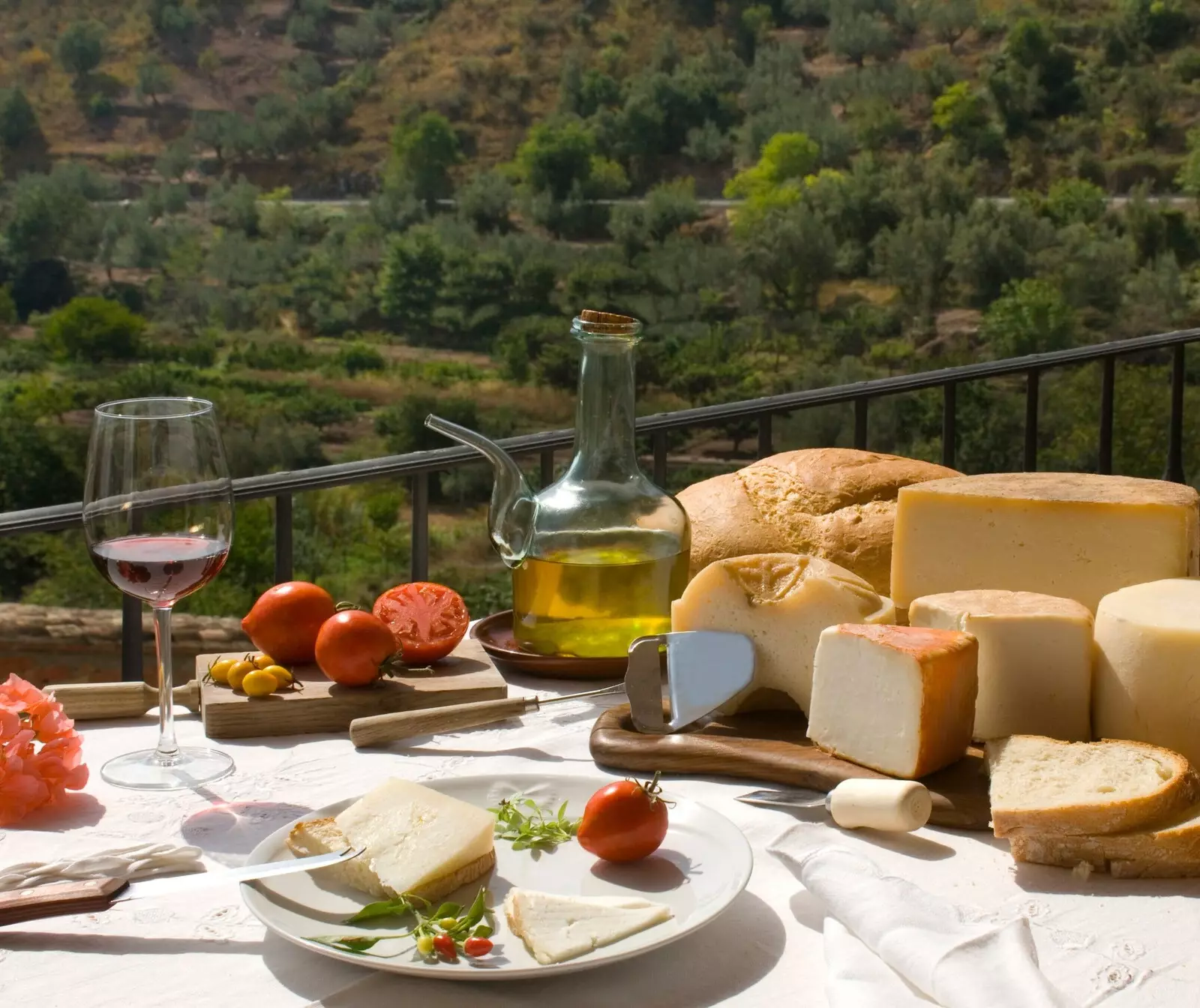
This is what a perfect table looks like according to the Los Corrales cheese factory
Like our favourite, which we pair with rosé wines from the Garnacha grape, with muscatel or fondillón : its stubby, raw goat milk and from 60 to 90 days of maturation in a heated cellar on wooden shelves. It is their only traditional cured cheese, very easy to identify due to its frustoconical shape and typical of Aragon and the Castilian Maestrazgo , but that by transhumance occurred throughout the province. Normally it was sold tender, not cured, but they have recovered it and use thistle flower rennet as a vegetable coagulant, which gives it a different depth and texture. For signature cheeses they use lamb rennet.
Or your White sorrow , of raw sheep milk , already considered traditional Spanish cheese according to the catalog of national cheeses, of semi-soft and buttery paste , intense smell and with two months of maturation, plus another in a cold room. Before they made it with guirra breed milk (“We have worked hard to make this breed known”) but now they do it with Lacaune . "Working with native breeds is our obligation as artisan cheesemakers." And this cheese is valuable because it is different: "we press this type of curd and that is why we get a different rind: apart from the molds, an indigenous bacterium appears". By the way: the rinds of its ripened cheeses are edible . They are impregnated with Extra virgin olive oil of the Serrana del Espadán variety They do not carry antibiotics or fungicides.
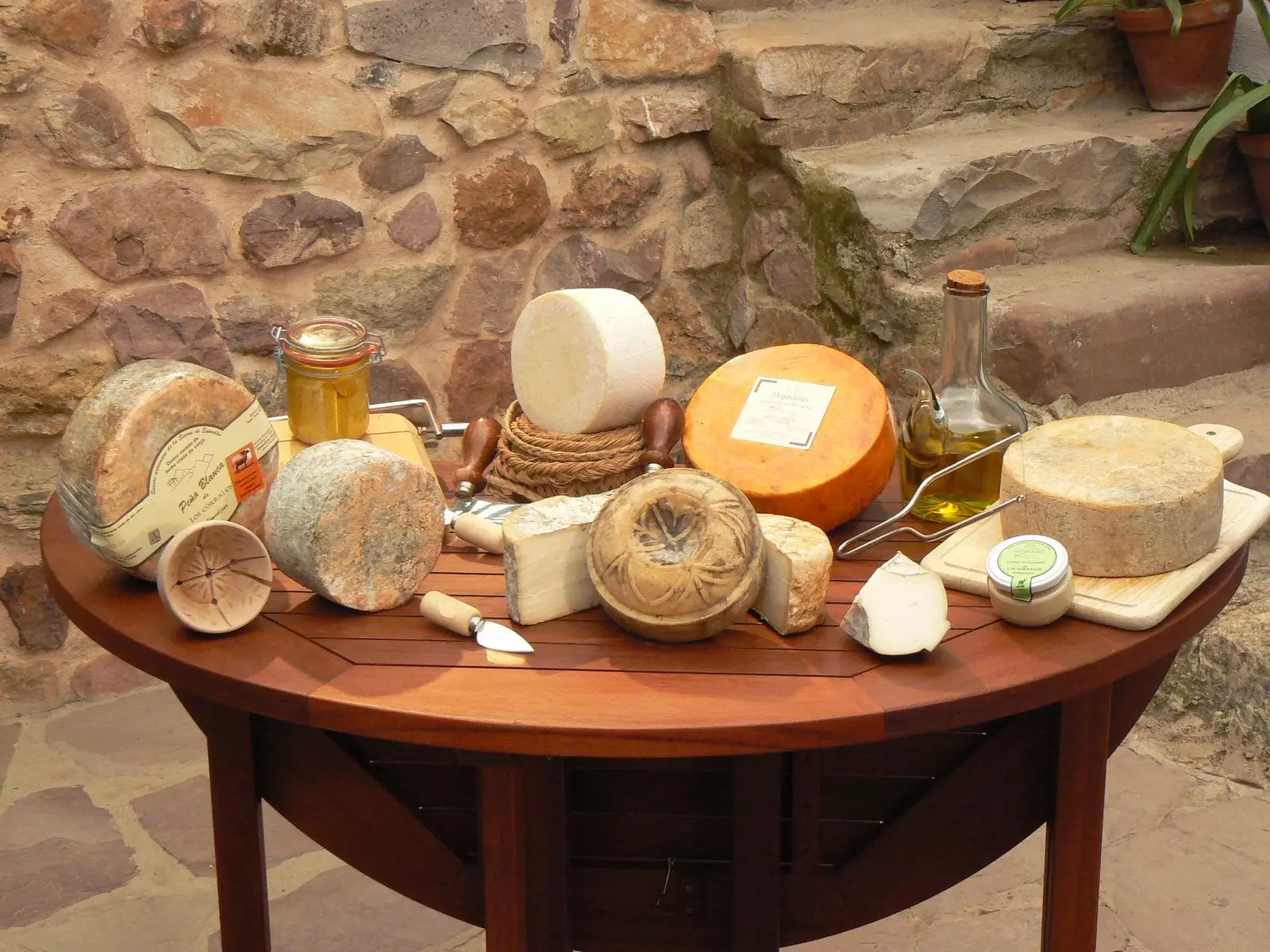
Cheese still life of Los Corrales
This cheese goes well with Oloroso, fine wines and palo cortado , but also with Natural cider or Ale type beer.
The Espadán cheese , a kind of version of the previous one, is also a lactic curd but with raw goat milk and with less maturation (from 40 to 60 days), which pairs with fermented white or young red wines and that we can heat (rind included) on the grill and finish it with tomato jam or red fruits. It's brighter than White sorrow , with more acidity, a stronger flavor but a shorter aftertaste, in a smaller format, with a characteristic musty smell and flavor that speaks so much of the territory in which they are found: the Sierra del Espadán, in that Mediterranean forest that is the agrarian region of Alto Palancia , full of cork oak forests with ferns and always humid soil.
It seems like a metaphor, because this undergrowth is the germ of everything : Ángel tells us that, although this is no man's land (this area was called to be the fourth province), “there is a lot of cultural movement, at the time there was a very advanced popular university and it has its own entity. Here people want to move on, improve and do different things”. Like them, who have always based their manifesto on the innovation that they missed in these parts: “ We started working with lactic coagulation , when in Spain they were hardly known. We learned from people from the Basque Country and Catalonia . Spanish-style dairy products have always had a lot of pull: with more intense flavors, faster and riskier coagulations , without the delicacy of French elaborations but with many more memories and more complex aftertastes. We elaborate with higher temperatures, exclusively with autochthonous molds that they give it a lot of character”.
Perhaps the secret is that Mayte and Ángel reaffirm their certainties. “We have realized that selling directly to end customers is very valuable , that we have to take better care of them and that we need to maintain greater control over production . This year, for example, we have stopped manufacturing for a month and a half Y we have had to throw out cheese because they only sold large surfaces . Small stores have not been promoted as they deserved, despite the fact that they have done a fundamental job”.
The queues at the door of his cheese shop say it all . Although they also continue, of course, selling in town stores. Because that is where the product is still valued.
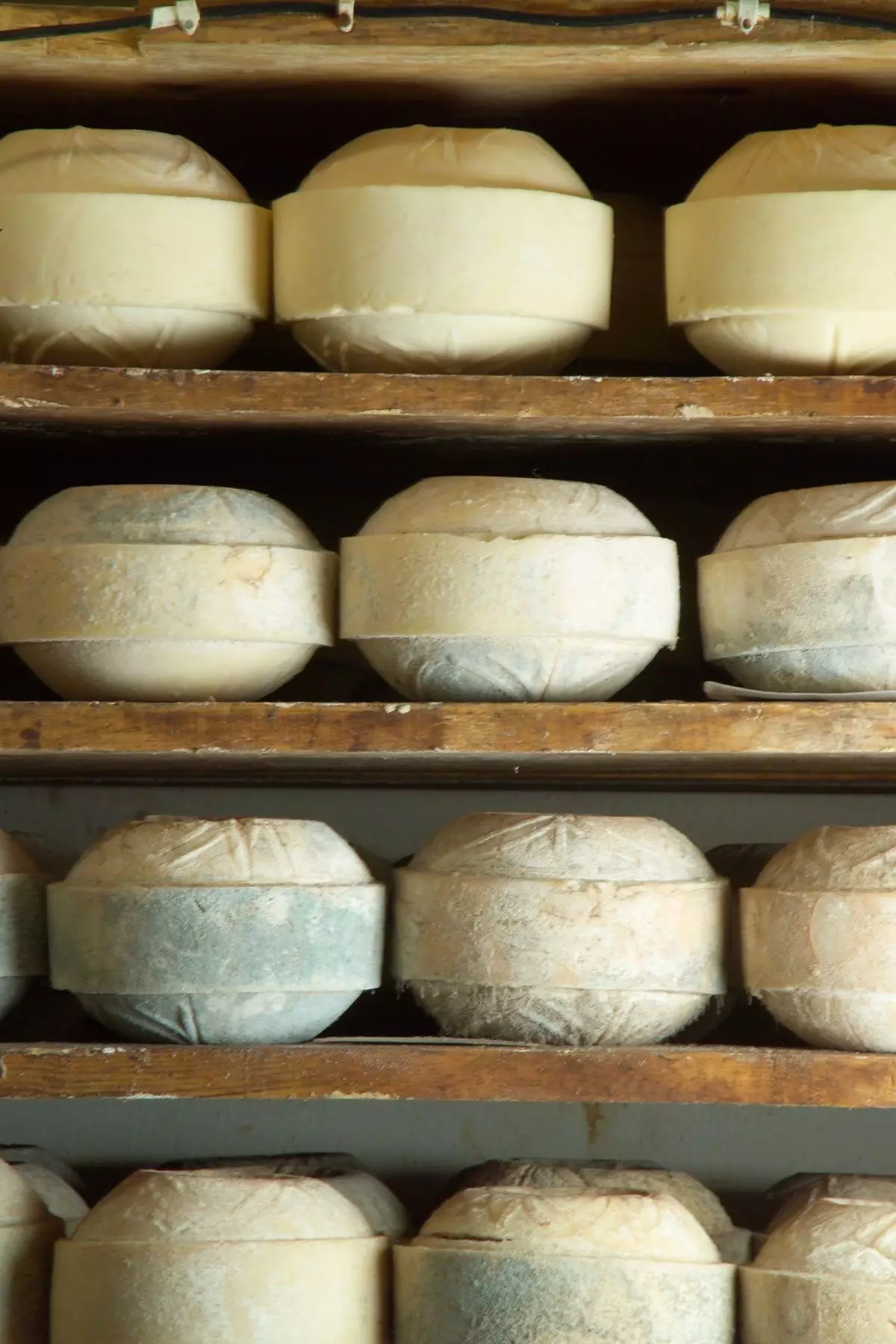
Cheeses maturing at Los Corrales artisan cheese factory
